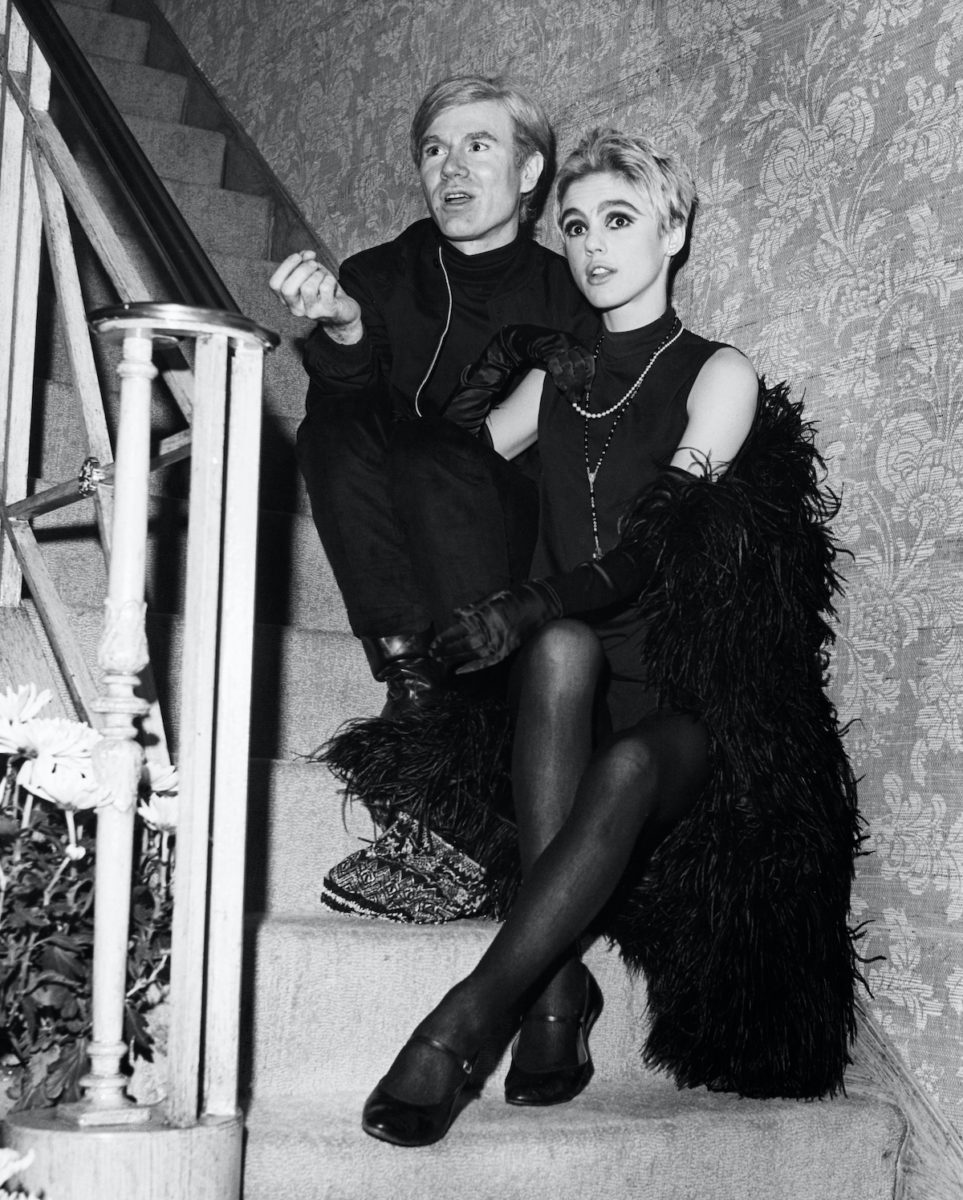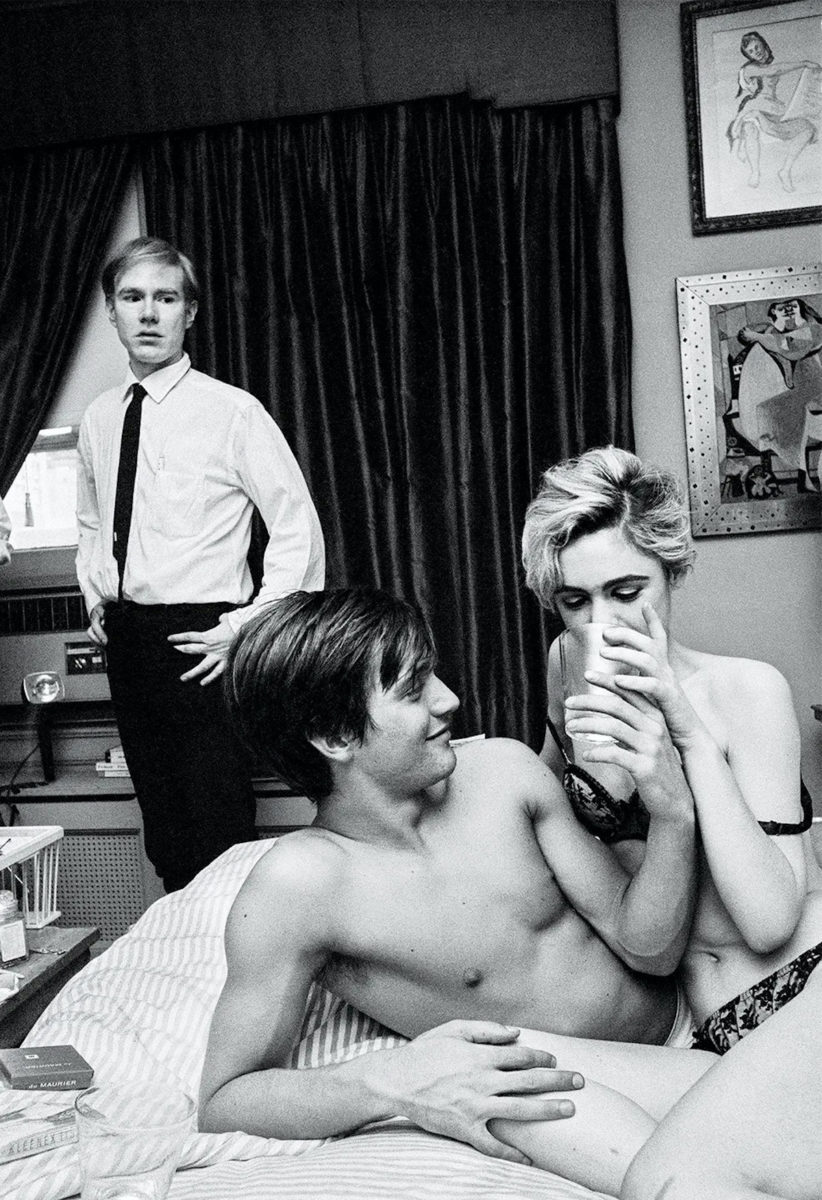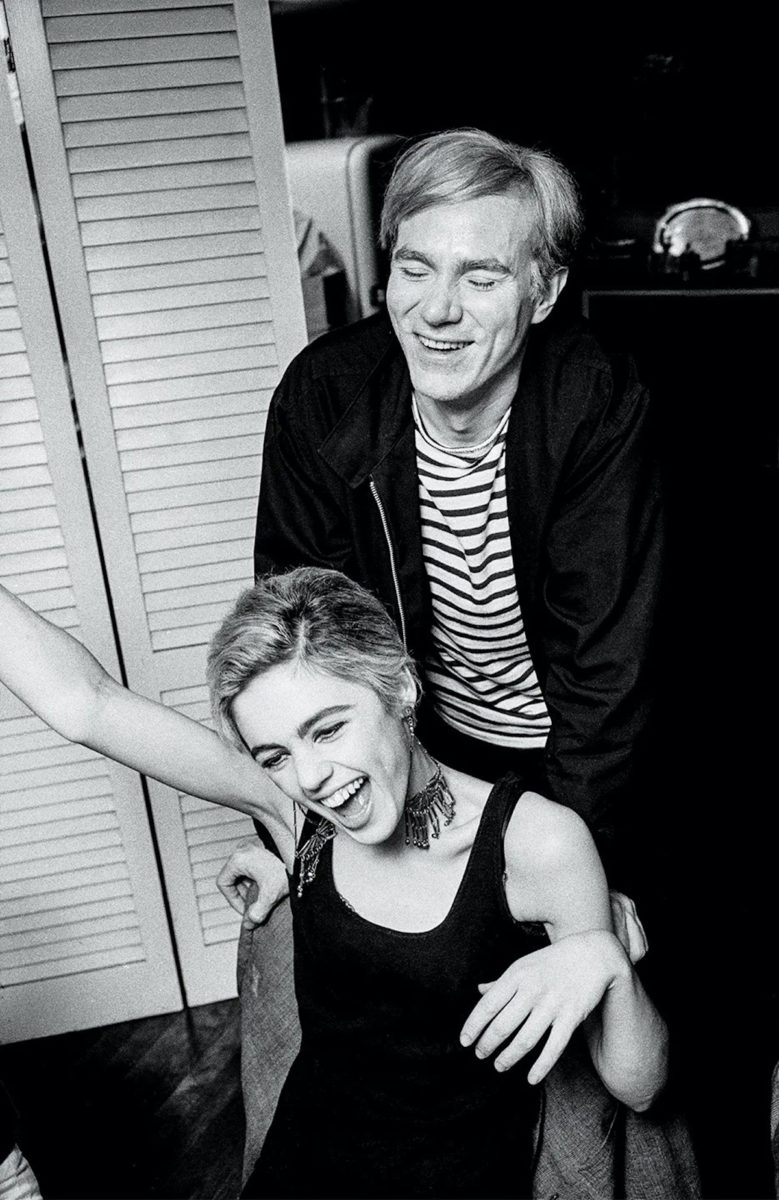By Mitchell Leung

The Meeting
He had many muses, partners, and subjects over the years. But in the 60’s, Andy Warhol fell in love with Edie Sedgwick– a partnership and friendship that dominated pop culture and continues to be remembered even now, despite how brief it was. They grew close and fell out of love with rapacity. In the interim, they captured the public imagination as symbols of passionate friendship and American celebrity.
When Andy met Edie, they were attending a birthday party for playwright Tennessee Williams. It was March 26, 1965—Edie was two years out of college, and Andy was well-established in NYC as a pop and experimental artist. Their meeting had actually been orchestrated by movie producer Lester Persky, who felt they might be to each other’s liking. Indeed, in Persky’s words, when Andy first saw Edie he “sucked in his breath and . . . said, ‘Oh, she’s so bee-you-ti-ful,’ making every single letter sound like a whole syllable.” He further adds to his initial impression of her in his book The Philosophy of Andy Warhol (From A to B and Back Again), saying that she seemed “so beautiful but so sick.”
Doing What They Loved, Loving Who They Did It With
At the party, Andy suggested to Edie that she stop by the Factory at some point in the future. So she did, a month later, while he was filming his movie Vinyl. An adaptation of the 1962 novel A Clockwork Orange by Anthony Burgess, it came six years before Stanley Kubrick’s more well-known version and ran through a condensed version of the story. Though Vinyl featured an all-male cast, Andy felt inspired at the last minute to add Edie in. Her part wasn’t huge — she just smoked and danced in the background alongside Gerald Malanga as “Victor” while “Nowhere to Run” by Martha and the Vandellas played, yet as with many of Andy’s “muses”, this role significantly boosted her star power. Not only did the public fall in love with her silent charisma and feminine physicality, but her appeal especially increased with Warhol himself—thus began a fruitful working relationship for them both, wherein she starred in almost twenty movies under Warhol’s direction, including Poor Little Rich Girl and Beauty No. 2.
Photo from Bob Adelman Estate
Many of the movies they made together were unscripted, a telling sign of how much Andy adored the authenticity she brought to the art and the very composition of who she was. He reportedly said this about her role in Poor Little Rich Girl: “To play the poor little rich girl . . . Edie didn’t need a script—if she’d needed a script, she wouldn’t have been right for the part.” To him, she was the art, not whoever she could pretend to be. The same April she also accompanied him to France for the opening of his Flowers exhibition, not long after their first encounter. It was on this trip that Andy said the words heard ‘round the art world– he was retiring from painting. This was evidently not an absolute promise, but still marked itself as an important moment in his career. Was it perhaps partly motivated by the presence of Andy’s movie star standing alongside him?
Photo by Steve Schapiro/Corbis via Getty Images
Good Things Fall Apart
Alas, things fell apart relatively soon. At some point during the summer, Edie remarked: “These movies are making a complete fool out of me!” She also began to become closer to Bob Dylan during this time, who she’d met in December of 1964, Rumors abound about the true nature of what their relationship was, just as they do about Edie and Andy. Edie’s friend, Danny Fields, recalls that Dylan and his manager Albert Grossman “didn’t like the Factory,” that “Grossman was going to manage her, and Dylan was going to make a movie with her,” although none of this came to be. The competition for Edie’s affections ultimately led only to loss.
One night in December of the same year, after a day of shooting Andy’s film Lupe with Edie and Billy Name, Robert Heide met Andy at a bar called Kettle of Fish. As Heide remembers, “When I got there, I saw Edie. She had tears in her eyes. I asked her what was wrong. ‘I try to get close to him, but I can’t,’ she whispered, and I knew she was talking about Andy. That’s when he arrived. Usually he wore dirty dungarees and a striped shirt, but he was dressed in a blue suede suit from the Leather Man on Christopher Street. He didn’t say a word.”
The encounter, already unsettling and uncomfortable for all involved, reached a strange peak of tension “when a limo pulled up to the front door. Bob Dylan walked in. Edie perked up, began talking in her little-girl Marilyn Monroe voice. Nobody else spoke. It was very tense. And then Dylan grabbed Edie’s arm and snarled, ‘Let’s split,’ and they did. Andy didn’t say anything, but I could tell he was upset.”
The fever dream continued even after Edie left with Bob. Heide calls Andy saying, “‘Show me the building Freddy [Herko] jumped out of.’ As we stared up at the window, Andy murmured, ‘Do you think Edie will let us film her when she commits suicide?’” This last, famously morbid line by Warhol, seemed reflective on the abundance of history he and Sedgwick had made in the past year while also being darkly predictive of the futures in store for them.
Not long after Lupe, Andy and Edie ceased to collaborate any further. Her relationship with Dylan did not last long either–he married Sara Lowndes in secret in November of 1965, which Andy himself revealed to Edie in February of 1966 during a meal at the Gingerman Restaurant. Though Edie became involved with Dylan’s friend Bobby Neuwirth for some time after, that too ended in early 1967, reportedly from his aversion to her drug use.
What happened?
The story of Andy and Edie, though famous, was not a long one. They were in each other’s lives for little more than a year total, yet she remains one of his most well-known “superstars”. Both apart and together, they seem to epitomize the themes and issues of the era. Edie’s highs and lows were plagued by drugs and mental health struggles – her death in 1971 came from a barbiturates overdose, and she was often public about her emotional turbulence. Part of Andy’s fascination with her seemed to be with this unhealthy vivacity she exuded. She also seemed to challenge conceptions of sexuality, with her chopped bob-cuts and lack of curves standing alongside her effortless femininity. Meanwhile, though he was gay, Andy seemed as infatuated as any heterosexual male, and to buy into all that was Edie. Why else would he star in so many films in so short a time?
Photo by Steve Schapiro/Corbis via Getty Images
Their relationship was sweet for only the briefest of times before it began to curdle. Many opinions have been cast on why they worked together so well, and what caused them to deteriorate both together and separately later on. It is almost appropriate to consider this all in summation and see the peaks and troughs of their relationship themselves as art. They did not carve out much in the grand scheme of their personal histories – but what they did eke out made an impact not just on each other, but on society and culture at large. They were both shining stars of the period, their luminosity multiplying feverishly upon their collaboration. Already icons alone, together they epitomized the passions and sensibilities of the period in their professional and personal relationships. Edie was glamorous but authentic, innocent but mature, and Andy was fascinated by all of it as he continued working with her.
They may have had their share of problems apart, but together for a brief moment they had one of the purest friendships in the public eye. They were effortlessly popular and provocative– Andy being the innovator and creator that he was, and Edie coming from the background she had, they represented different journeys through America that could come together and see the other honestly, without judgment. Though it eventually fell apart, they redefined “beauty” for American pop culture in ways that resonate to this day.




